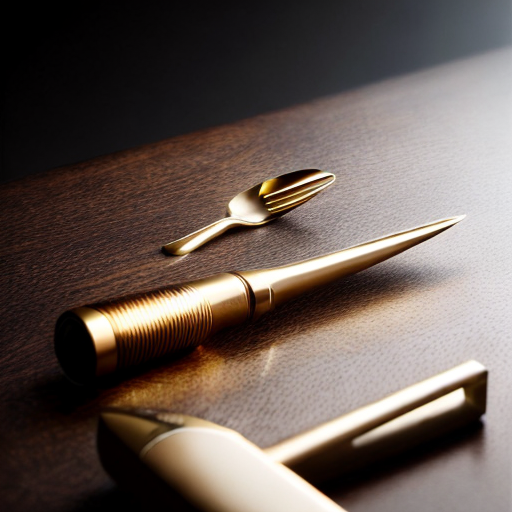Setting the table can be a daunting task, especially when it comes to understanding the mysterious world of utensil placement. But fear not, my fellow table-setting enthusiasts! Let's embark on a journey to demystify this ancient art. Picture this: you're standing in front of a table, armed with an array of shiny utensils. The fork, like a trusty sidekick, is always on the left, ready to spear your food with precision. On the right, the knife stands tall, its blade pointing towards the plate, reminding you that it means business. And let's not forget the spoon, the gentle giant, quietly nestled to the right of the knife, waiting to scoop up any delicious soups or desserts that come its way. So, my friends, fear not the utensil placement puzzle, for with a little practice, you'll be setting tables like a pro, impressing your guests and leaving them wondering, 'How did they become a table-setting genius overnight?'
An interesting fact about setting utensils on a table is that the order in which they are placed actually has a historical significance. In medieval times, when people would dine in large banquets, the host would often display their wealth and power by providing an abundance of utensils. The more important the guest, the more utensils they would be given. As a result, the order in which the utensils were placed on the table became a subtle way of indicating the guest's social status. The most important utensil, the knife, would be placed closest to the plate, followed by the spoon, and then the fork. This hierarchy of utensils would continue, with additional forks and spoons placed in descending order of importance. So, the next time you set utensils on a table, remember that the arrangement has a historical significance rooted in social hierarchy!
Preparing for a formal dining experience can feel like stepping into a grand ballroom, filled with elegance and sophistication. As you embark on this culinary journey, let us unravel the secrets of arranging utensils for a truly refined table setting. Imagine a symphony of gleaming silverware, each piece meticulously placed with purpose. The forks, like graceful dancers, align on the left, from the salad fork to the dinner fork, leading the way to culinary bliss. On the right, the knives stand tall, their blades pointing inward, ready to slice through any culinary masterpiece. Nestled beside them, the spoons await their turn, poised to indulge in soups and delicate desserts. So, my dear connoisseurs of fine dining, let us embrace the art of utensil arrangement, for it is through this harmonious display that we elevate our dining experience to new heights of sophistication.

When it comes to casual dining, the atmosphere is relaxed, the conversation flows freely, and the utensil placement follows suit. Picture a cozy gathering with friends or family, where laughter fills the air and delicious aromas waft from the kitchen. In this laid-back setting, the rules of utensil placement become more flexible, allowing for a more informal approach. As you set the table, remember that simplicity is key. Start by placing the fork on the left side of the plate, followed by the knife on the right, with the blade facing towards the plate. The spoon, if needed, can be placed to the right of the knife. Remember, there's no need to go overboard with a multitude of utensils. Keep it minimal and practical, ensuring that your guests have what they need to enjoy their meal. So, my fellow hosts and hostesses, embrace the casual dining etiquette, where the focus is on comfort and connection, and let the utensils on your table reflect the relaxed and inviting atmosphere of your gathering.
A fun fact about setting utensils on a table is that there is a secret language to their placement! In formal dining etiquette, the way you position your utensils can communicate messages to the waitstaff. For example, if you're finished with your meal, you can signal this by placing your knife and fork parallel to each other, with the handles pointing towards the bottom right corner of your plate. This tells the server that they can clear your plate. On the other hand, if you're just taking a break, you can indicate this by crossing your knife and fork diagonally across your plate, with the handles pointing towards the top right corner. So, next time you're at a fancy dinner, you can impress your friends with your secret utensil language skills!
Special occasions call for extraordinary attention to detail, and what better way to make a lasting impression than through creative utensil placement? As you prepare to host a memorable event, let your imagination run wild and infuse your table decor with a touch of whimsy. Think outside the box and consider unconventional ways to arrange your utensils. Perhaps you can artfully stack the forks and knives, creating a unique vertical display. Or, for a playful twist, place the spoons in a charming little jar, inviting your guests to pick their favorite. Remember, the goal is to create an ambiance that sparks conversation and leaves a lasting impression. So, my creative hosts and hostesses, let your imagination guide you as you set the stage for a truly unforgettable dining experience, where even the utensils become a work of art.